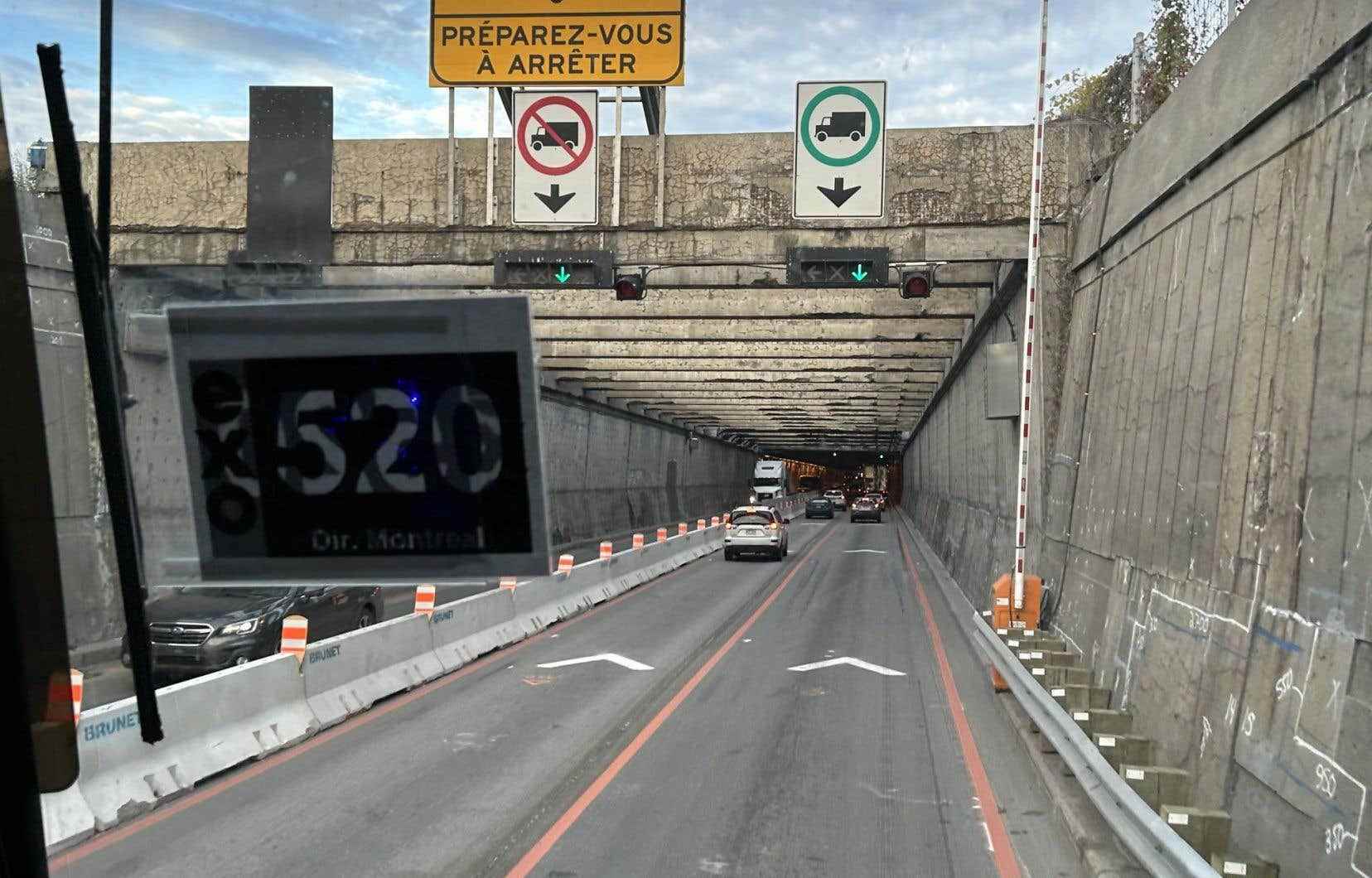The “hell” of the Louis-Hippolyte-La Fontaine tunnel was not for this morning. Traffic was fluid, at rush hour, despite the closure of half the lanes of the bridge-tunnel. The journey between the Sainte-Julie terminus, on the South Shore, and The dutyat the Berri-UQAM metro, was done in 45 minutes thanks to the free shuttle bus that takes passengers to the Montreal metro.
The bus shelter for line 520, at the Sainte-Julie terminus, was deserted when the journalist from the To have to, around 7:50 a.m. At 8:08 a.m., half a dozen passengers boarded the coach heading for the Radisson metro station, on the other side of the river. About a quarter of the seats are occupied.
The trip was uneventful: we arrived at the entrance to the tunnel in 11 minutes by taking the reserved lane on Highway 20. Seven minutes later, we disembarked at the Radisson station, on the green line of the Montreal metro. Two employees distribute return tickets from the Société de transport de Montréal to passengers to take the metro for free.
About 45 minutes after leaving Sainte-Julie, we are in front of The duty, close to the Berri-UQAM station. Free.
“I can’t believe people won’t take advantage of it. The service is efficient. And it’s free,” says Yannick Gareau, a resident of Sainte-Julie who works at the Pie-IX metro station.
He has been boarding the free shuttle since last week which takes him to the Radisson metro station. A godsend, according to him: the monthly pass is normally $184 per month for this type of combination of buses from the South Shore and the Montreal metro.
Yannick Gareau dares to believe that in three years of work on the Louis-Hippolyte-La Fontaine tunnel, public transport will gain in popularity. “For that, the service will have to be punctual,” he says.
“I think it’s great,” adds another passenger from Sainte-Julie, Nancy Landry, seeing the bus move at a good speed in the reserved lane. She goes to Place Versailles, a stone’s throw from Radisson station.
Changing habits
The relative fluidity of traffic observed Monday morning does not surprise Pierre Barrieau, expert in transport planning and lecturer at the University of Montreal. “It’s a normal reaction. There is a bit of panic and a bit of uncertainty. People left early. They did more telecommuting. In the first days, the psychological plays very strong. In addition, it’s Halloween, ”and people want to go home early at the end of the day, he summarizes.
But once this apprehension has passed, motorists should resume their habits, he believes. From the end of the week and in the course of next week, we should see real congestion set in. There will be a first collision in the axis of the La Fontaine tunnel. Then there will be the first snow. “For me, the first snow will be the real test,” he says.
For Catherine Morency, full professor at Polytechnique Montréal and specialist in mobility, it is only a postponement. If she wants the tunnel construction site to encourage motorists to change their habits, she does not believe that the additional public transport measures put in place are sufficient.
“It would take very aggressive measures to promote the other modes,” she says. “It does not take mitigating measures. We need tools that will remain a posteriori. »
According to her, we must stop taking people “hostage” with only one transport option. “We add highways in order to go faster, but people don’t save time as they will settle further,” she explains. “It’s been years since we should have developed the networks [de transport en commun]. There’s not enough. We should take that experience to do it. »
